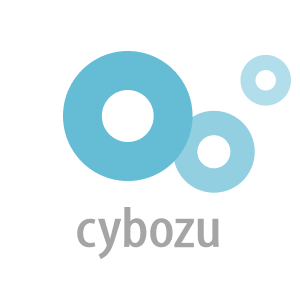Updated August 15, 2023
New Year's in Japan: Traditions and Culture
Just like anywhere in the world, celebrating the new year in Japan is something of a big deal.
I don’t know if you’ve heard, but Japanese people are quite sentimental. You can tell by the abundance of customs the Japanese people still follow to this day or by the culture of protecting societal harmony and apologizing for inconveniencing others, as I mentioned in my post on saying “thank you” in Japanese.
As expected, a culture as rich and deep as Japan’s has plenty of customs and traditions around celebrating the new year as well.
In fact, New Year’s Eve is especially important in Japanese culture because it doesn’t just signal the beginning of a new calendar year, but it also symbolizes one’s hopes, dreams, and prospects for the coming year while providing a chance to reflect on the past.
Overall, New Year’s, or shōgatsu, is a magical time to be in Japan due to how important the holiday is taken. So, if you haven’t experienced New Year's in Japan, to say that you’re in for a treat is an understatement.
In this post, I’ll explain some of the most prominent New Year's traditions in Japan and even talk about some common celebratory dishes.
Firstly, however, let’s briefly explain why New Year’s Eve is so significant in Japan.
In this article: 📝
Significance of New Year’s Eve in Japanese Culture
As I mentioned, New Year's in Japan is a big deal. In fact, it just might be the most important holiday of them all, and there are multiple reasons for this.
For one, the holiday is all about connecting with your loved ones, especially the ones you don’t often see. This is why families like to come together and celebrate the occasion together, as it gives them a chance to spend quality time during a significant moment of the year.
Another reason why New Year’s is so important in Japan is that it’s seen as a fresh start. Unlike many other cultures, Japanese culture sees each year as a separate entity. This means that whatever happened in the previous year is done and left in the past. What’s ahead is a fresh, clean slate full of new hopes and dreams.
So, from this perspective, celebrating the new year has a whole new meaning for Japanese people, as it symbolizes leaving the past behind and embracing the endless possibilities of the future. In a way, it feels like a healthy, collective meditative practice that teaches people not to get hung up on the past.
Of course, due to this unique point of view, New Year’s is one of the longest holidays in Japan. All businesses shut down until January 3rd, and some people even take a whole week off to spend time with their families and distant relatives.
Now, let’s see how the holiday is celebrated in the country.
Popular Japanese Traditions Celebrating New Year’s
As I mentioned, Japan has a rich culture, and as New Year’s is one of the most important and celebrated occasions in Japan, there are many traditions around the holiday in Japan that you may not know about.
So, here are some of the most common traditions.
Decorating the House: Kadomatsu, Kagami Mochi, and Shimekazari
Decorating your house for the New Year is one of the most prominent new year traditions in Japan.
According to Japanese culture, it’s important to have decorations put up with distinct meanings, as they ensure that your new year will be as prosperous as you hope it will be.
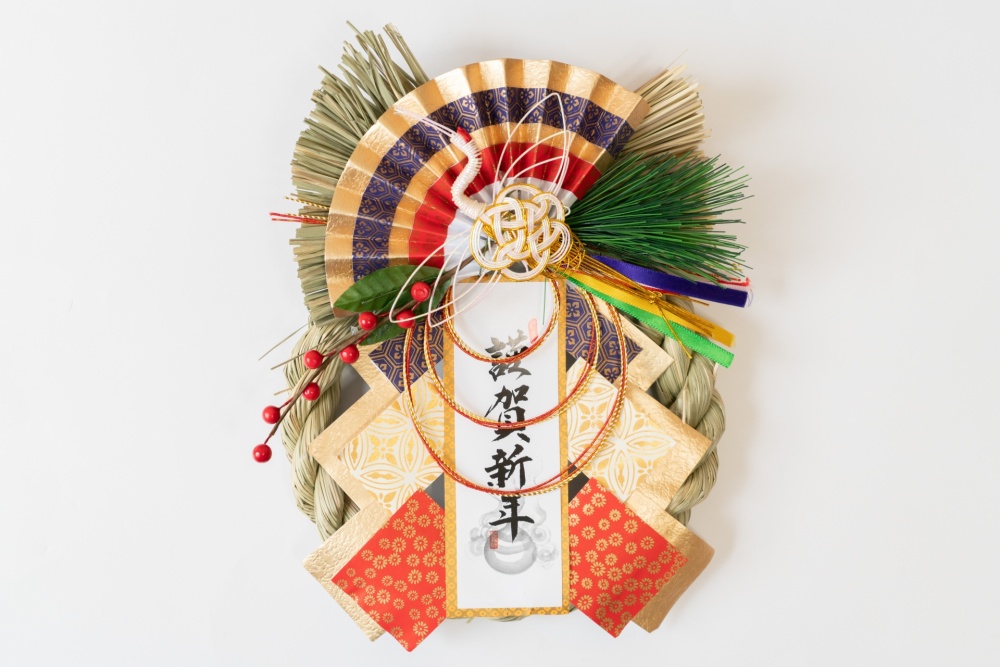
For instance, Shimekazari is among the most common decorations during New Year’s in Japan. This wreath is made out of shimenawa, a sacred straw rope made out of rice, a type of bitter orange, and pine, and it’s hung on the front door of a house, symbolizing prosperity while keeping evil spirits away.
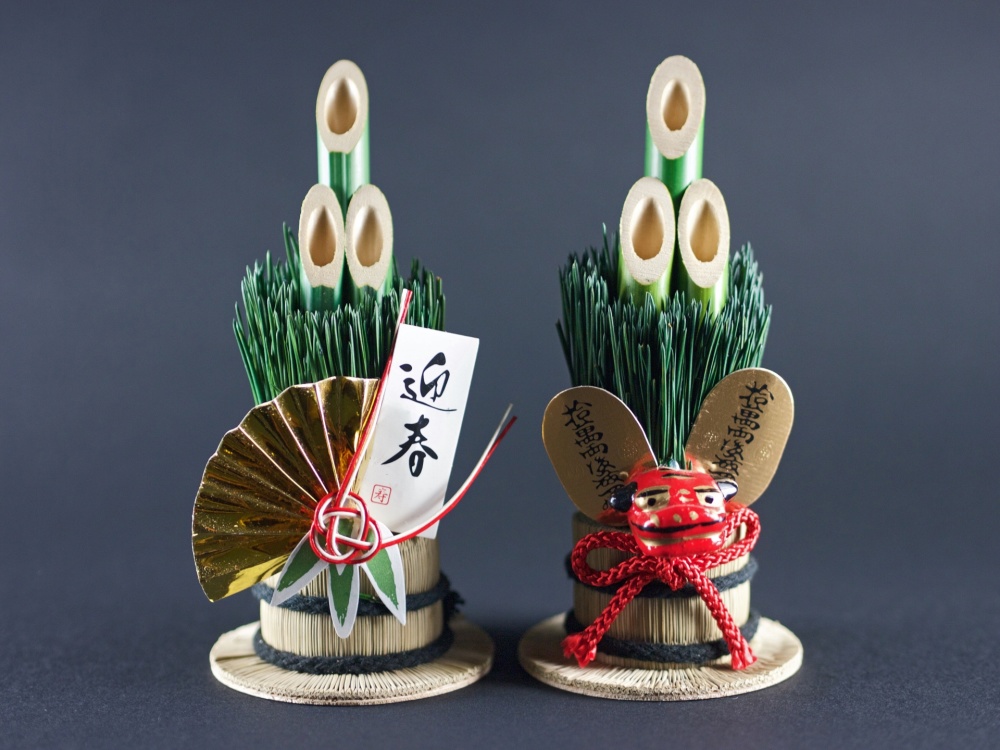
Another common decoration, kadomatsu, is also placed in front of the house but next to the door. Kadomatsu are made out of pieces of bamboo stalks, plum tree sprigs, and pine and are usually placed in pairs. These decorations symbolize prosperity as well and are placed to offer shelter to Toshidami, a god of bountiful harvest according to the Shinto belief.
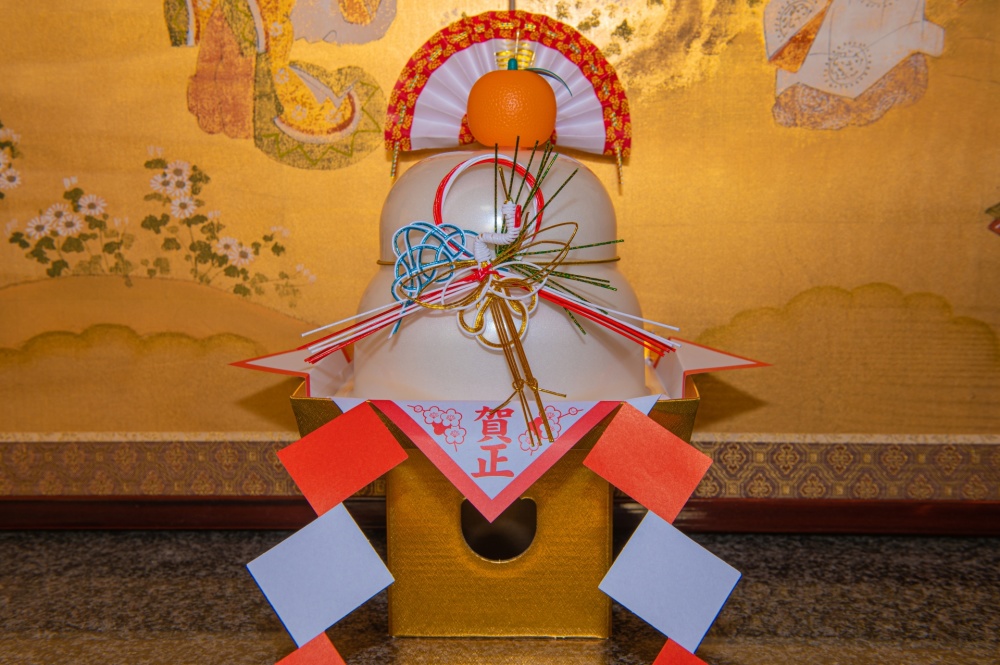
Lastly, another common house decoration you’ll come across during New Year’s is kagami mochi. As the name suggests, these are made out of mochi, which is a delicacy made out of rice flour. The simple decoration is made by stacking two pieces of mochi and a special type of orange called daidai on top of each other.
As it’s the case with kadomatsu, kagami mochi decorations are also offered to Toshidami, and they can be eaten once they fulfill their purpose.
Cleaning the House: Osoji

As new years in Japan symbolize new beginnings, you can’t have a truly fresh start without getting rid of the previous year's dust and dirt. This is why deep cleaning the house for New Year’s is a big tradition in Japan.
This tradition is called osoji, which literally translates to “deep cleaning.” Usually, it’s customary for the whole household to participate in the cleaning one way or another. The purpose is to get into the corners of the house, especially those places where it’s too much of a hassle to get into during regular cleaning.
Of course, as much as it’s a practical tradition, it’s also a spiritual one, as getting your house ready for the new year is also a way to pay respect to the Shinto deities that are believed to visit households during New Year’s Eve.
Giving Children Money: Otoshidama
This tradition is a children’s favorite, as otoshidama means handing children money around New Year's, or more specifically, on the first day of the new year.
As part of the tradition, grown-ups are supposed to give money to children in envelopes. These are usually the children’s parents, grandparents, and close relatives. Still, the tradition might differ from household to household, as some children may receive money only from their parents, while others receive it from all of their older relatives.
The amount given isn’t much, and it can vary depending on the family, but it’s usually somewhere between 2,000 JPY and 10,000 JPY, which is more than enough to make a kid’s day.
Hatsumode and Listening to New Year’s Temple Bells
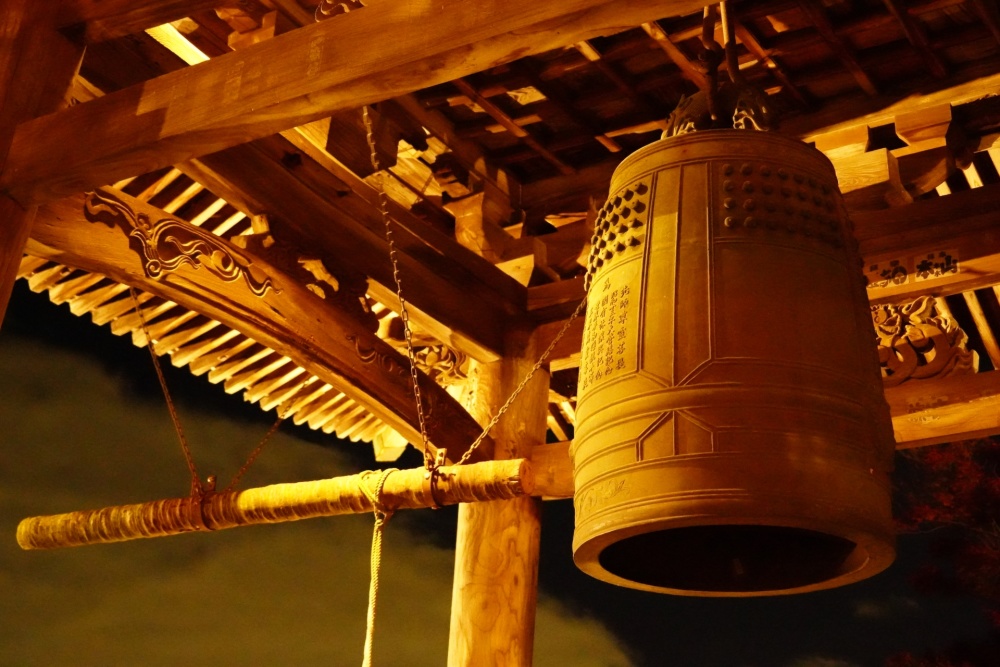
Another common tradition for New Year’s Eve in Japan is to listen to the bells ring at the end of the day at midnight when the new year officially arrives.
Pretty much everywhere in Japan, when the clock strikes midnight, bells start ringing in temples and shrines to welcome the new year. You’ll see crowds gathering at temple grounds before midnight, who are all there to hear the bells and celebrate the coming of the new year together.
The reason the bells are rung at midnight actually comes from a Buddhist tradition. According to this tradition, the bell is to be rung exactly 108 times. This number symbolizes the temptations of the mortal world, and each ring is to remove a single temptation, slowly leaving the body and mind free of earthly desires.
If you go to the temple grounds to hear the bells ring at midnight, try not to create any distractions, as they may not be well-received. Listening to the bells without distractions is said to bring good luck in addition to ridding oneself of their desires.
While we’re on the subject, another tradition that’s tied to shrines and temples is hatsumode, which is the first shrine visit of the year. Although this is a Shinto tradition, people visit Buddhist temples as part of the tradition nowadays as well.
While many pay their first visit to Shinto shrines or Buddhist temples in the first hour of the year, some people may choose to do hatsumode on the second or third day of January as well.
During their visit, people bring the charms they purchased in the previous year, which are called omamori, as I mentioned in my post on the gift-giving culture omiyage, and return them to buy new ones for the new year. According to Buddhist traditions, these amulets are believed to bring luck and protection to the bearer.
Watching the First Sunrise of the Year: Hatsuhinode

This is another tradition that’s reserved for the first day of the new year, as hatsushinode means “the first sunrise,” and it represents watching the first sunrise of the new year.
Before the sun rises on the first day of January, many Japanese people like to go out and find a spot to see the first lights of the day. The act symbolizes the hopes one has for the new year and is also meant to bring a fresh start to one’s life.
While you can enjoy hatsushinode anywhere you can see the sunrise, Mt. Fuji is an especially coveted place for this purpose. So, if you’re into adventures, it’s safe to say that doing hatsuhinode at Mount Fuji will, without a doubt, become one of your most memorable experiences.
Sending New Year’s Greeting Cards: Nengajo
Similar to the tradition of sending Christmas cards, it’s customary in Japan to send greeting cards to your friends, family, and relatives that live far away for New Year’s.
As the tradition of sending cards is slowly fading in Western countries and e-cards have pretty much replaced them, the act of sending greeting cards, or nengajo has been somowhat fading in Japan as well.
To put things into perspective, news outlets report that the use of physical greeting cards have peaked in Japan in 2003. Now, the current numbers suggest that physical cards have dropped to an all-time-low in 2022, with only 14 cards per capita in the 2022 fiscal year.
In addition to sending physical cards, which is mostly done by those who are 40 and older nowadays, people from younger generations also send each other New Year’s greetings on social media platforms, or via messaging apps such as LINE.
A difference, however, between the greeting cards in the West and nengajo is that the latter aren’t just meant to celebrate one’s new year but also express gratitude for one’s friendship or support over the years.
The reason this tradition is still alive just might be due to its long-running history, as the tradition of sending nengajo is believed to have originated in the Heian period of Japan, somewhere between 700 and 1100 A.D.
Originally, the tradition called for sending a nengajo to everyone you know, but in those times, people’s social circles were much smaller. Nowadays, you don’t have to send a card to everyone you know, as that wouldn’t be feasible.
Nengajo cards are specific to the new year, and you can buy them at any post office around New Year’s. If you’re worried that your card won’t make it in time, just make sure to send it in the 10-day window prior to December 25th, and your card will most likely be delivered on the first day of the year.
Lastly, keep in mind that nengajo isn’t just reserved for those who live far away. You can very well send a card to your close friends and family as a gesture of appreciation even if you see them regularly.
Popular Food for New Year’s in Japan
Just like anywhere in the world, food and traditions go hand in hand in Japan as well, and what better way to celebrate the new year than with some delicious, hearty food?
As I mentioned in my post on Japanese noodles, one of the most popular New Year's dishes in Japan is a soba dish called toshikoshi soba. These delicious noodles are enjoyed on New Year’s Eve and are prepared with soba noodles, which is a gluten-free noodle variant made from buckwheat.
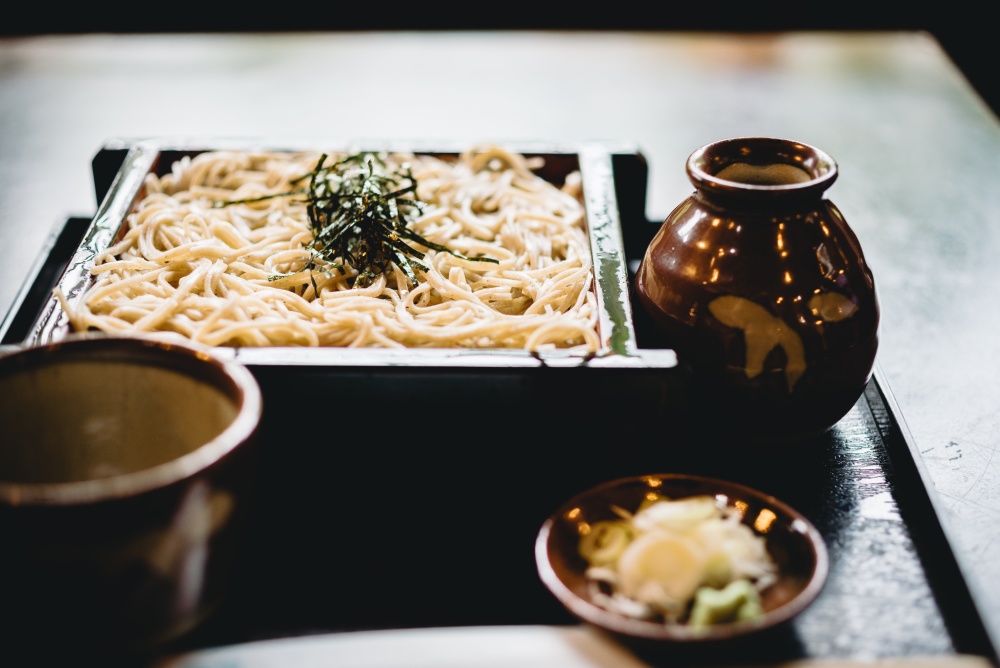
While toshikoshi soba is enjoyed on New Year’s Eve, another traditional New Year’s dish is nanakusa gayu, and it’s usually prepared on January 7th, towards the end of Japan’s New Year's holiday.
Nanakusa gayu is also known as seven-herb rice porridge, which is self-explanatory. The dish is flavored with local spices from Japan, and the spices can vary depending on the region it's prepared. If you’ve ever had Chinese congee, you’ll find that the taste is similar.
In addition to toshikoshi soba and nanakusa gayu, there are many other food items enjoyed around this time, which are collectively called osechi-ryori. Let’s now take a closer look at osechi and find out what some popular dishes symbolize.
Osechi-Ryori: A Bento Box of Hopes and Dreams
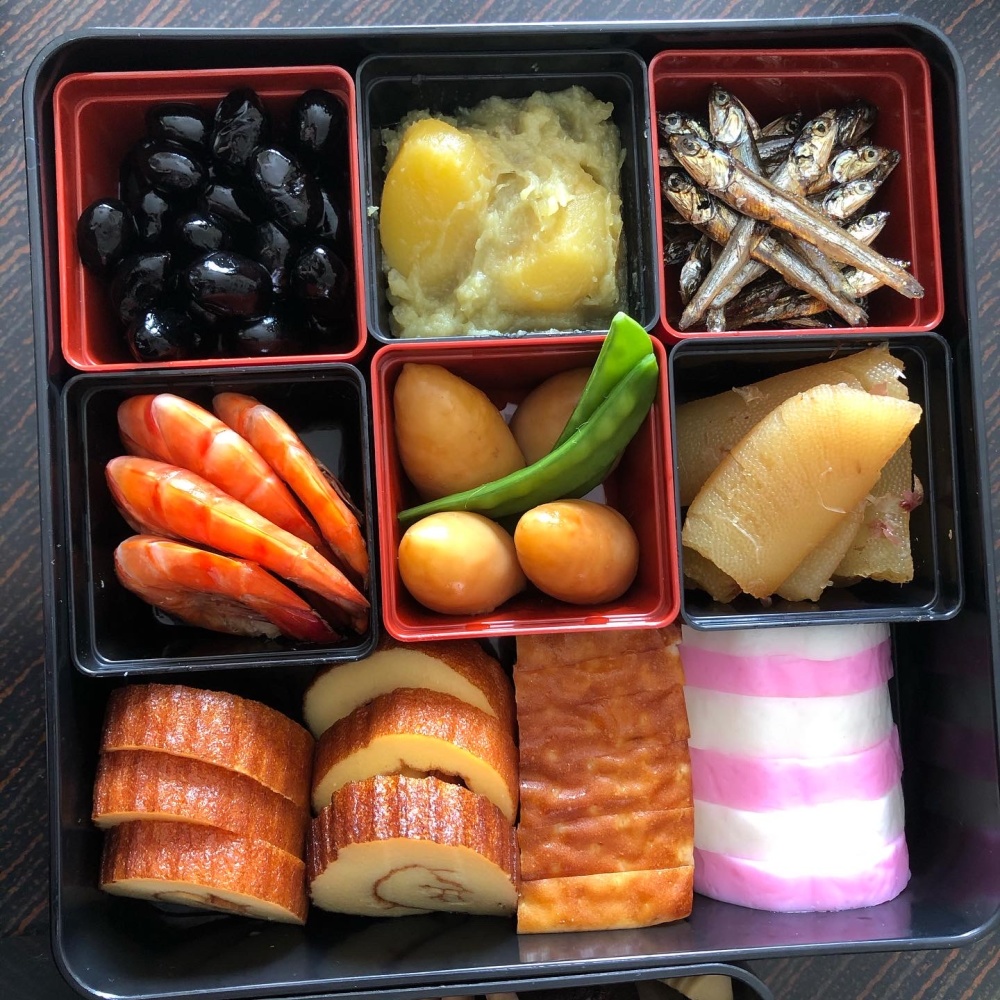
As I mentioned, osechi-ryori isn’t just the name of a specific dish or a food item. It refers to the concept of combining a variety of different food items and simple dishes.
Osechi-ryori can be made at home or can be bought ready-made at the store. Whether you buy it or make it yourself, you’re supposed to place your little dishes into a box called Jubako, which resembles bento boxes and has multiple layers.
Originally created as a way to make an offering to the deities, osechi later became a symbol of one’s good fortune, and the term “osechi cuisine” became the name for the collection of dishes that are prepared for osechi-ryori.
Osechi can also be interpreted as stacking up happiness and good luck, which refers to the way Jubako boxes can be stacked up on each other. Usually, osechi boxes are prepared in stacks of fives, and one of the boxes, the last one, stays empty to allow for deities to bestow their blessings.
Another reason why osechi exists is to prepare food beforehand so that no one has to prepare food during the first few days of the new year. This allows the whole family to enjoy the holiday together without having to worry about serving food.
As the osechi prepared before New Year’s Eve is meant to be enjoyed for a few days, and because the tradition originated at a time when refrigerating food wasn’t an option, traditional osechi is mostly made up of food that can be stored at room temperature for a few days.
This means that fermented and preserved food is the most common, but there’s more variety to osechi-ryori.
Each dish that’s eaten as part of osechi is traditional Japanese food that symbolizes a specific wish for the person eating it. As each food item has a special meaning, let’s look at some of the most popular ones and explain what they mean.
Most Popular Osechi-Ryori Foods and Their Meanings
As I mentioned, there are many varieties of osechi eaten during New Year’s in Japan, so it would take another standalone post to cover them all. However, you can see some of the most popular ones and what each one means below.
Top-Tier Osechi Dishes
Each tier of the osechi boxes is specific, so let’s start with the top tier, which includes sweet celebratory snacks and dishes, collectively referred to as iwai-zakana.
Kazunoko: Meaning “herring roe,” the word kazunoko comes from a combination of the Japanese words kazu and ko, which mean “children” or “offspring” and “number,” respectively. It symbolizes one’s luck for having many children and grandchildren.
Tazukuri: These are essentially candied sardines. While it may sound random, tazukuri actually originated in a time when sardines were used as fertilizer for rice paddies, which usually yielded a bountiful harvest. Today, they symbolize a good harvest and an abundance of food.
Kuromame: As mame means beans in Japanese, this delicacy is a sweet paste made of black beans. “Mame” also means “organized” or “vigorous,” and the dark bean paste resembles the darkened, sunburnt skin of workers in a field. So, this dish represents productivity and is also believed to ward off unwanted spirits.
Second-Tier Osechi Dishes
The second tier of osechi-ryori includes dishes fermented in vinegar, which are called sunomono, as well as small side dishes and appetizers called kuchitori. Some common items are:
Datemaki: These sweet rolled omelet-like cake bites are similar to castella cake, which is spongy and tender. Due to their scroll-like rolled shape, they symbolize knowledge and are meant to bring wisdom.
Kurikinton: A mixture of mashed sweet potatoes and candied chestnuts, kurikinton symbolizes wealth and financial independence.
Kobumaki: The name kobumaki comes from the konbu, or kobu, which is a seaweed used for wrapping food. As the name suggests, kobumaki are kobu-wrapped food items, which symbolize childbirth, as well as one’s youth.
Kamaboko: This fish cake made from fish paste resembles a sunrise due to its reddish-pink and white colors. The red symbolizes joy, and the white symbolizes sacredness.
Third-Tier Osechi Dishes
The third tier of osechi ryori is reserved for grilled seafood and fish, which are collectively called yakimono. Here are some of the most common ones:
Tai: Tai is a celebratory dish that’s often eaten on special occasions, and it’s basically grilled sea bream. In fact, the name “tai” comes from the word celebration in Japanese, which is medetai, and it’s exactly what the dish represents — a celebration.
Ebi: This dish is essentially grilled shrimp, as ebi means “shrimp” in Japanese. The dish symbolizes long life, as the long whiskers of the ebi represent the long beard of an old person.
Ise Ebi: Ise ebi is grilled spiny lobster, and just like ebi, it also represents long life and longevity. This dish can also be in the top tier of osechi, depending on regional customs, as it can also be considered a celebratory dish.
Buri: The name buri refers to the yellowtail fish, which gets different names throughout its lifecycle. Because of this, the yellowtail represents success and going up in rank, as samurai and academics in the olden days would get different names as they climbed the ladder to success.
Fourth-Tier Osechi Dishes
Be it for the deities’ blessings or to make room for one’s hopes, the fifth tier of the osechi ryori is left empty. So, the fourth tier is the final box with food in it. This fourth layer is made of stewed and simmered vegetable dishes, which are called nimono.
However, these vegetables aren’t what you may be used to, as they are usually local vegetables and roots harvested around Japan’s mountains. Here are a few example dishes commonly found in this tier:
Tataki gobo: Tataki gobo is made from burdock, a root vegetable with medicinal properties. The dish is made by pounding the root until it’s smashed and cracked. Because the gobo roots are known to be strong, the dish represents one’s strength and endurance.
Kuwai: Another root vegetable, this starchy plant is known as arrowhead, and it symbolizes a steady, prosperous career due to the plant's long-growing root.
Renkon: Renkon is prepared by simmering lotus roots, and due to the appearance of many holes in the slices, it represents being able to see a clear future ahead.
Satoimo: Simmered in sake, mirin, soy sauce, and sugar, satoimo is the root part of the taro plant. As the taro root has one main tube that branches to many smaller tubes, this dish represents one’s luck with their offspring.
Does Japan Celebrate Lunar New Year?
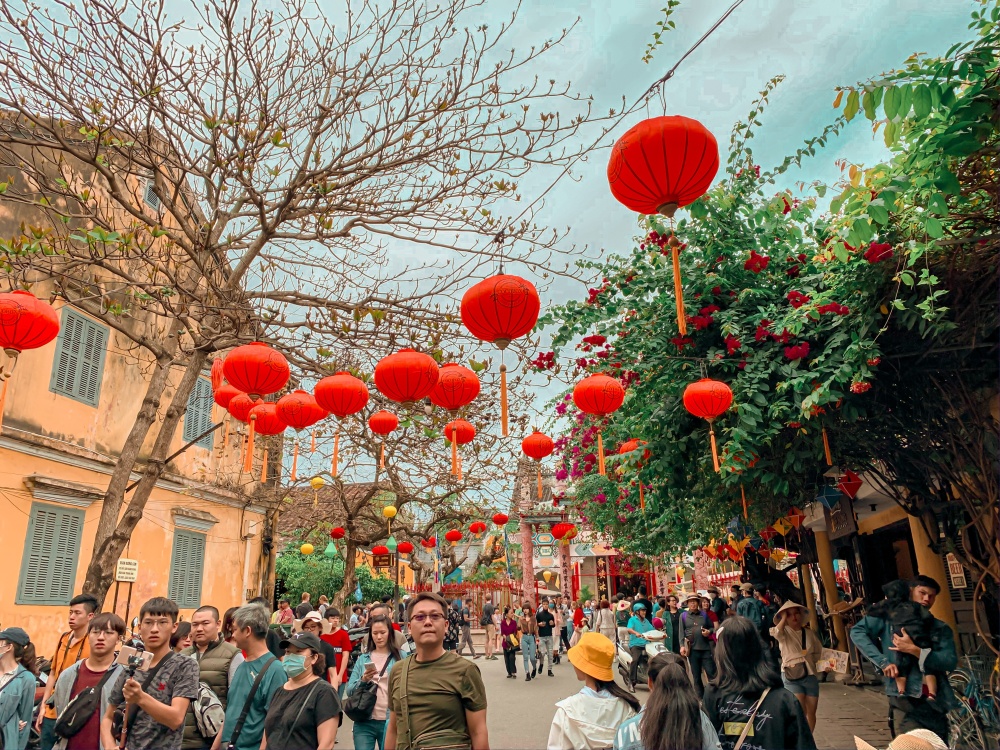
While New Year’s is one of the most celebrated holidays in Japan, the lunar new year isn’t officially celebrated, as it’s not an official holiday in Japan. Still, albeit rare, you may see people celebrating in some parts of Japan.
The main reason why Japan doesn’t celebrate the lunar new year is simple; the lunar new year marks the end of a passing year and the beginning of a new one according to the lunar calendar, which Japan doesn’t use anymore.
This calendar is based on the monthly cycle of the moon instead of the phases of the sun, and it’s still used in other Asian countries, more specifically, East Asian countries like China, Taiwan, South Korea, and Vietnam.
This is exactly how the lunar calendar once entered Japanese culture in the first place, through China and Korea.
However, during the Meiji restoration period, which is a time of great developments in Japan, as I explained in my post on Japanese technology, the country dropped the lunar calendar to switch to the Gregorian calendar to be more synchronized with the rest of the world.
As a result, the lunar new year isn’t officially celebrated as a holiday, but you can still see people celebrating it around the time the lunar new year comes, which is around February. This is due to the fact that the lunar calendar is a part of the country’s history, and there are Chinese neighborhoods that celebrate the occasion as well.
Common Japanese New Year Gifts: Oseibo
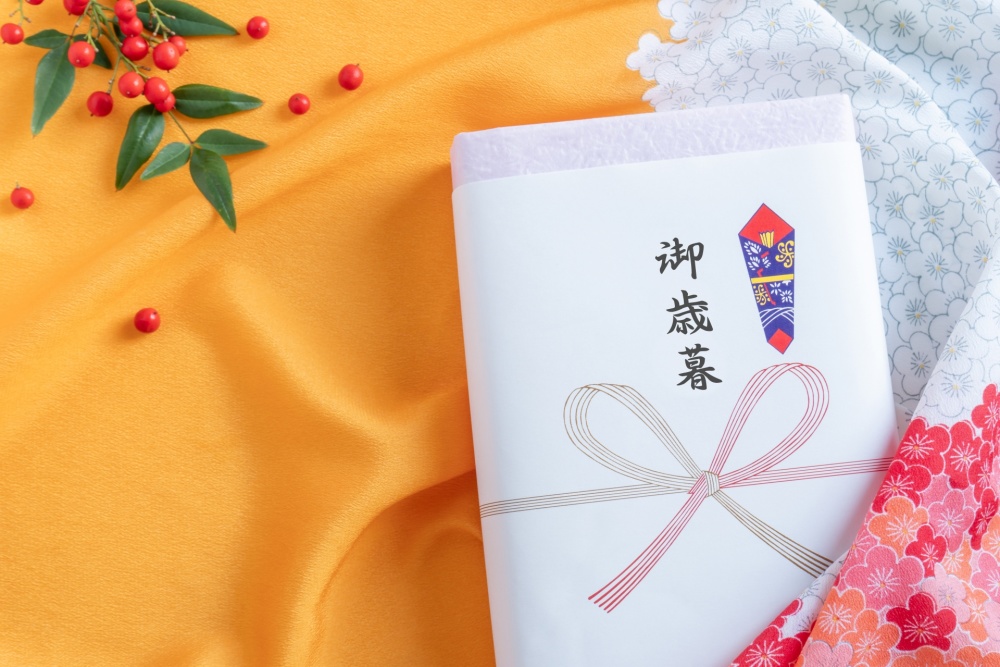
Once a tradition to honor one’s ancestors, today, oseibo is a gift-giving tradition among loved ones. The tradition is specifically for New Year’s, and it’s customary for families, friends, and close colleagues to buy gifts for one another at the end of December.
You can think of oseibo as a way to celebrate the gratitude you’ve had for someone for the whole year. It can also mean “thank you in advance” for the coming year.
Of course, as it’s a tradition for everyone, oseibo gifts are only meant to symbolize one’s consideration of their loved ones and are supposed to be small items that aren’t too expensive.
Here are some of the most popular items you can gift someone as oseibo:
Fancy sweets and candy,
High-quality processed meat products such as fancy sausages, bacon, and ham,
Sake or beer,
Rice.
While these are some of the most popular ones, you can also buy food or other household items.
Once you buy oseibo gifts for people, expect an endless cycle of mutual gift-giving for years to come. You may think that it’s inconvenient to do it every year, but it’s nice to keep traditions like these alive. That said, oseibo is somewhat of a dying tradition, with nearly 60% of Japanese people not adhering to it.
Popular Japanese New Year Greeting Phrases
You may have learned all about Japanese new year traditions, but nothing will make you feel like you’re a local than learning these greeting phrases that are commonly used around New Year’s.
So, as I conclude this post, I’d like to leave you with some useful Japanese phrases you can use to greet people on New Year’s Eve and throughout the New Year’s holiday in Japan.
Shin’nen’omedetō (新年おめでとう): A general phrase that means “happy new year.”
Yoiotoshiwo (良いお年を): This also means “happy new year,” but it’s used before the New Year’s holiday begins.
Akemashite omedetō gozaimasu (明けましておめでとうございます): This phrase also means “have a good year” and can be used interchangeably with the previous phrase.
So, now that you’re done here, if you want to learn more Japanese phrases you can use in daily life, you can check out my post on basic Japanese greetings, as well as my posts on how to say sorry in Japanese and basic Japanese phrases you can start using today.
Get Job Alerts
Sign up for our newsletter to get hand-picked tech jobs in Japan – straight to your inbox.




